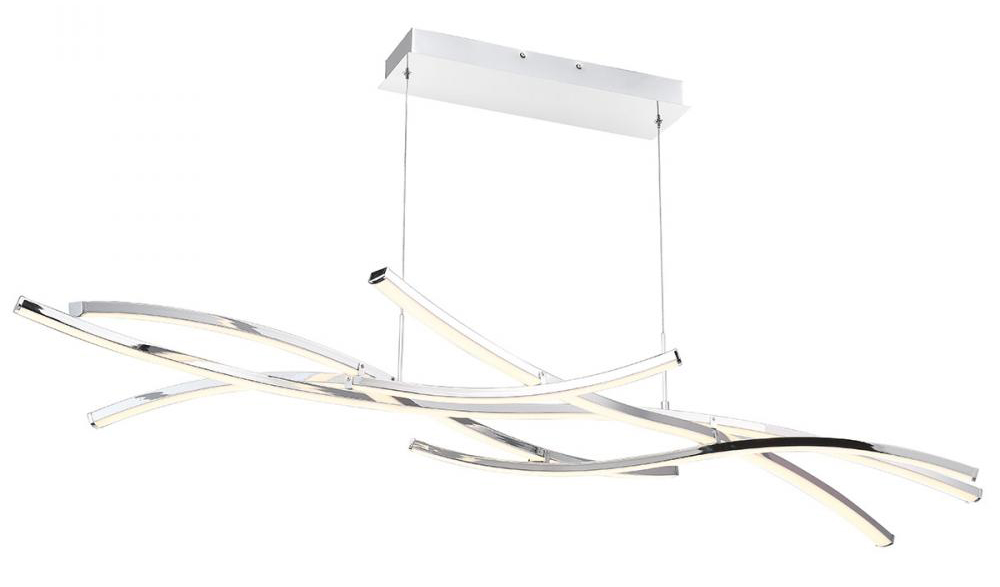Rethinking Lighting in Your Kitchen Design
During kitchen remodeling, homeowners often prioritize consideration of elements like countertops, cabinets and appliances. One aspect that is often overlooked is lighting.
“Lighting is the jewelry of your home,” says Lisa Cauldren, a lighting design consultant at Littman Brothers, a family-owned lighting and furniture solutions company that we’ve worked closely with for many years. “When budgeting for a remodel or new construction project, make sure you budget for lighting that will compliment and add that finishing touch.”
By rethinking lighting in your kitchen remodel, you can drastically change the overall look and feel of the space. Let’s explore some of the best ways to light up your culinary kingdom.
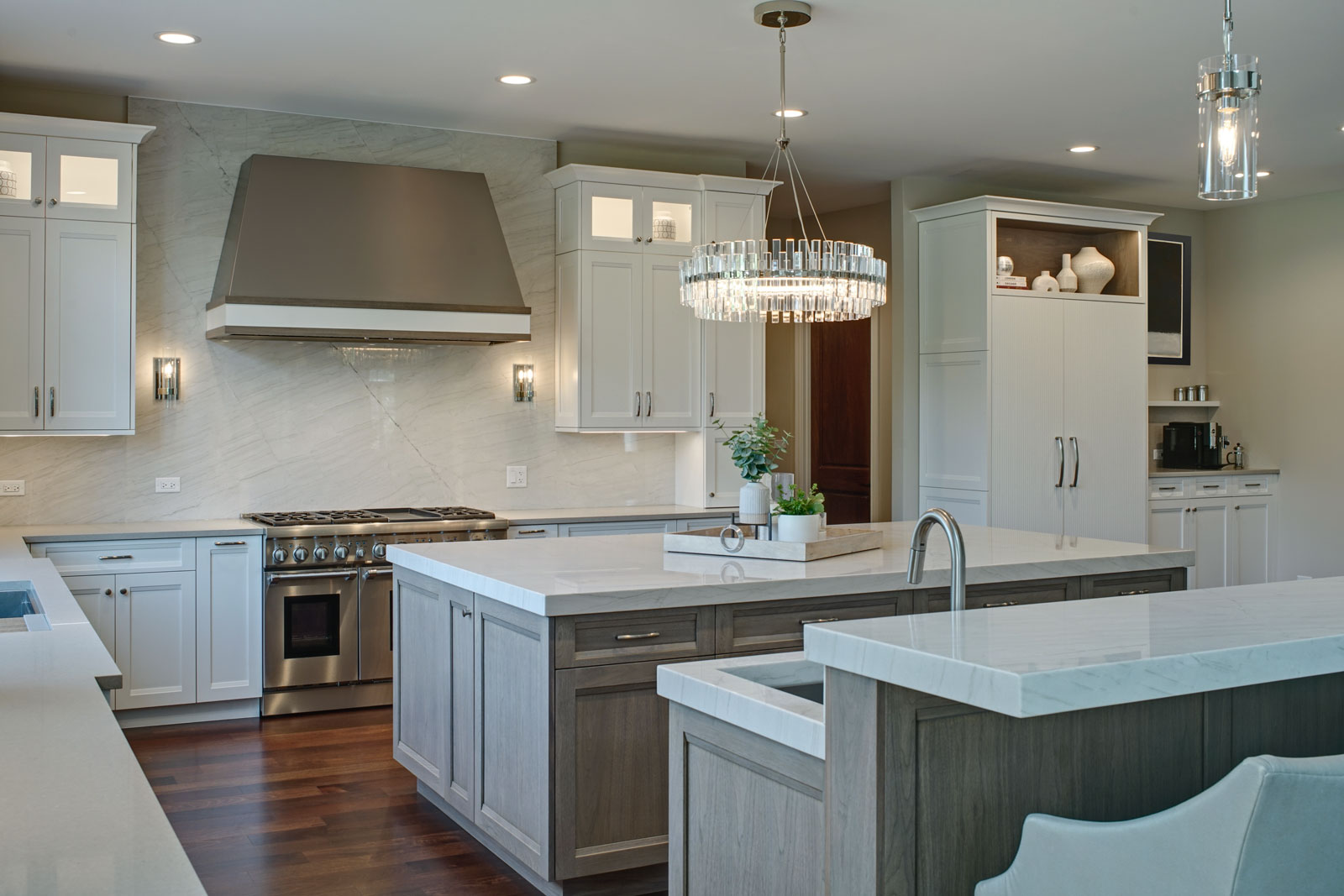
Lighting Considerations When Remodeling Your Kitchen
Lighting a kitchen goes beyond merely looking for fixtures you like and assuming that placing them here and there is all you need to do. A proper lighting plan is a comprehensive approach to lighting a space – it should create a beautifully lit, up-to-date space that is functional and safe. And yes, you can still pick fixtures and have fun along the way.
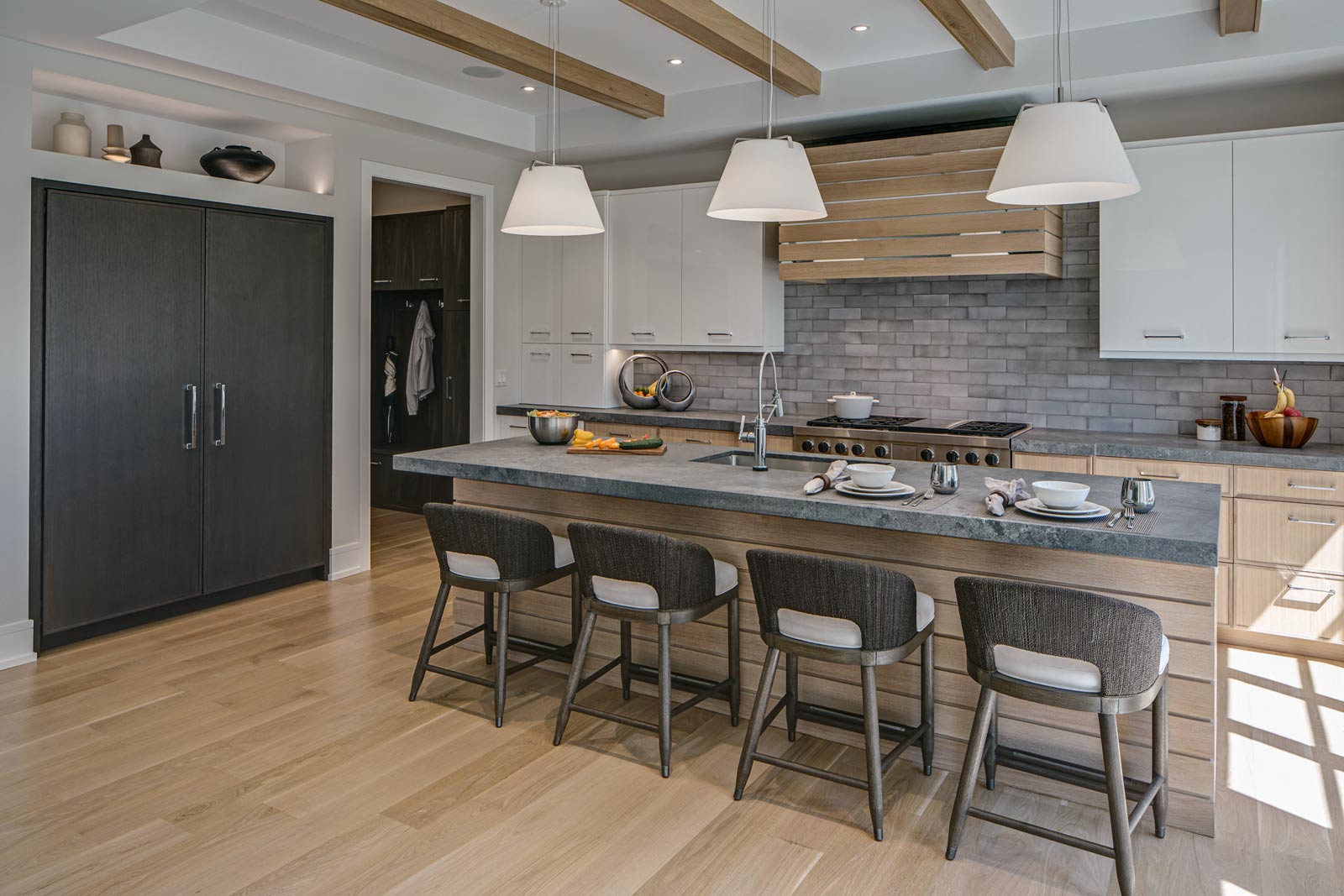
Types of LIghting for Your Kitchen
For any kitchen remodel, think through the three primary types of lighting and where to use each: ambient, task and accent lighting.
- Ambient lighting provides overall illumination and sets the mood.
- Task lighting is used to illuminate specific areas where work is done, such as over the sink or stove.
- Accent lighting is used to highlight design elements and focal points.
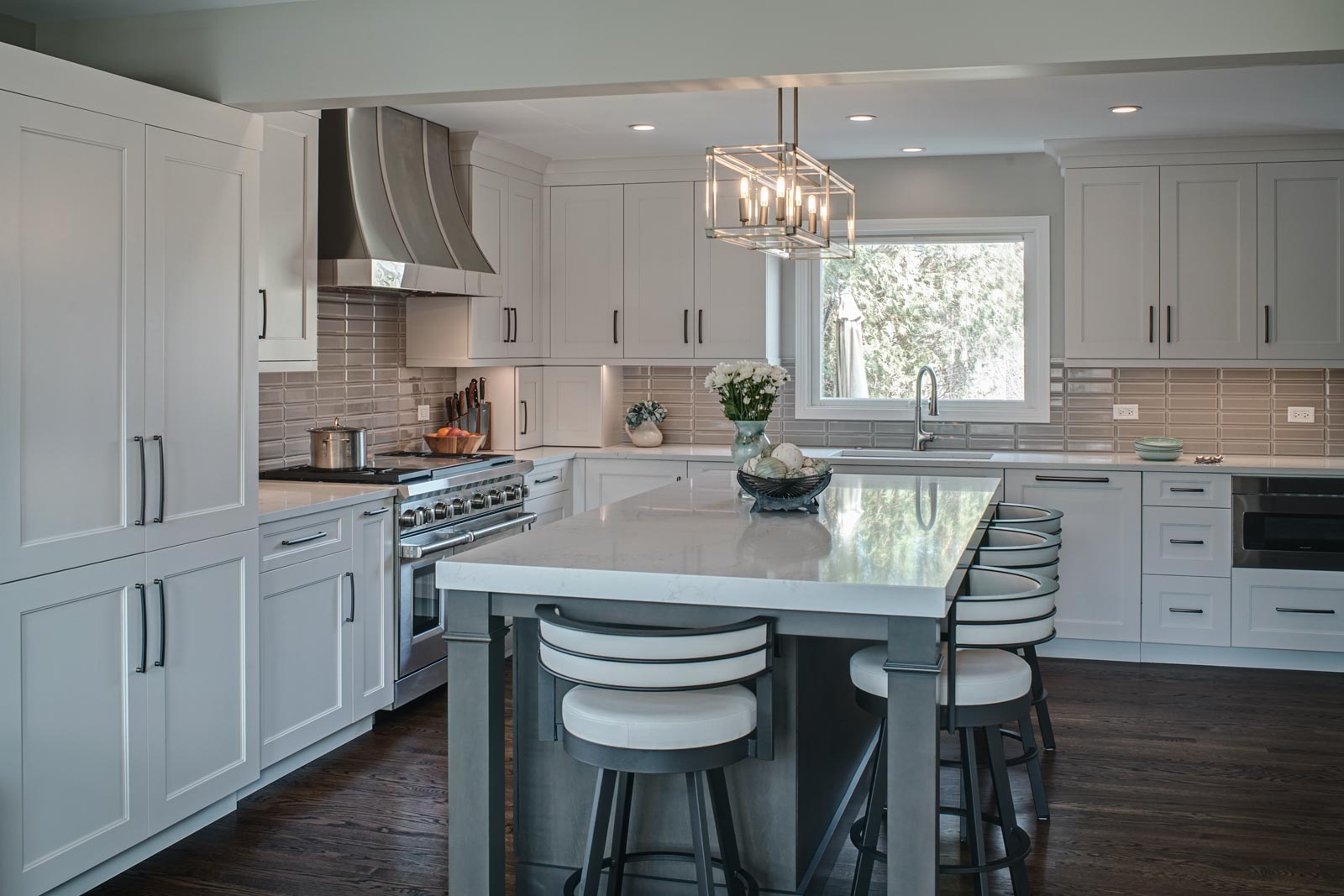
Factors to Consider When Lighting Your Kitchen
When choosing kitchen lighting, appearance and style are essential. Your lighting should complement the overall kitchen design. Your lighting should also be functional for tasks like cooking and cleaning. After all, who wants to chop veggies in the dark?
Consider for a moment, the commercial equivalent of lighting a kitchen – there are codes and regulations around lighting areas where food is stored and prepared. The idea is to have brightness, light quality and coverage standards that improve safety. Better visibility = better decisions and functionality in regards to food safety and occupational safety. Yes, many a Michelin star-awarded restaurant has moody lighting around the dining tables, but you can bet with 100% certainty that food prep and storage areas in the kitchen are brightly illuminated and up to code.
Foodie-level chefs are likely to have similar expectations for the prep and storage areas of a residential kitchen. But even novice culinarians can benefit by taking cues from the highly regulated professional culinary world – a well-lit kitchen just makes sense.
What doesn’t make sense, however, is the assumption that the bulk of your kitchen needs to be pro-kitchen bright at all times. Don’t forget those early mornings and late nights when limited lighting is more fitting for making coffee or a midnight snack. And then there are the eating areas, like island seating and nearby dining spaces. Most people like those areas to be adjustable for a range of situations, as well.
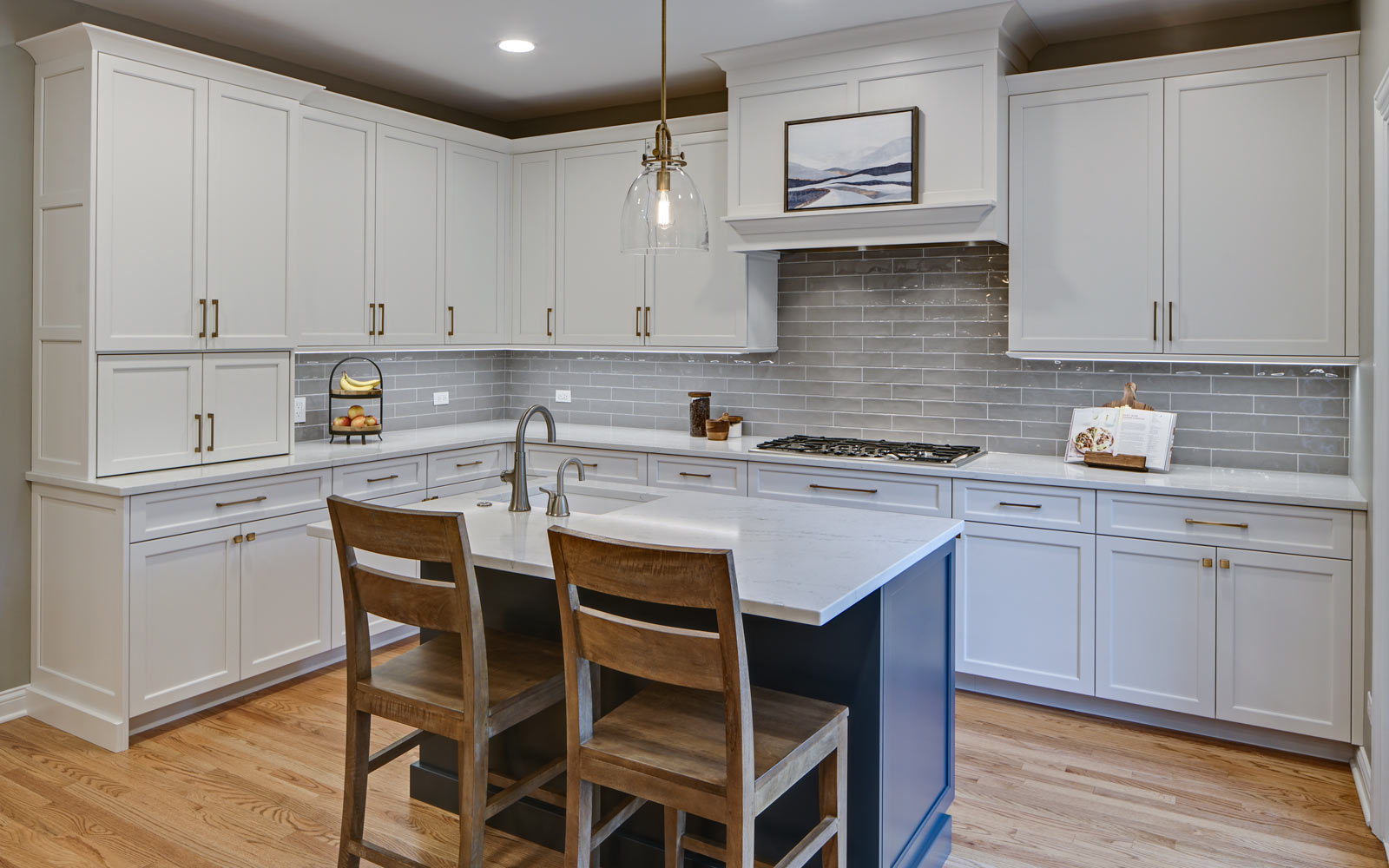
Importance of the Right Kitchen Lighting
With the right lighting, you can elevate a simple kitchen into one that is warm and inviting, sophisticated and chic, or modern and elegant. Your designer can help you explore different kitchen lighting layer elements to suit the situations you’re designing for.
Different light fixtures can make your space feel cozy and inviting or modern and upscale… or even somewhere in-between. Don’t forget natural light. A professional kitchen designer will know how to plan around natural light in order to enhance it, get more of it, or scale it back. The amount of light, natural or powered, plays a large role in how your kitchen design comes to life.
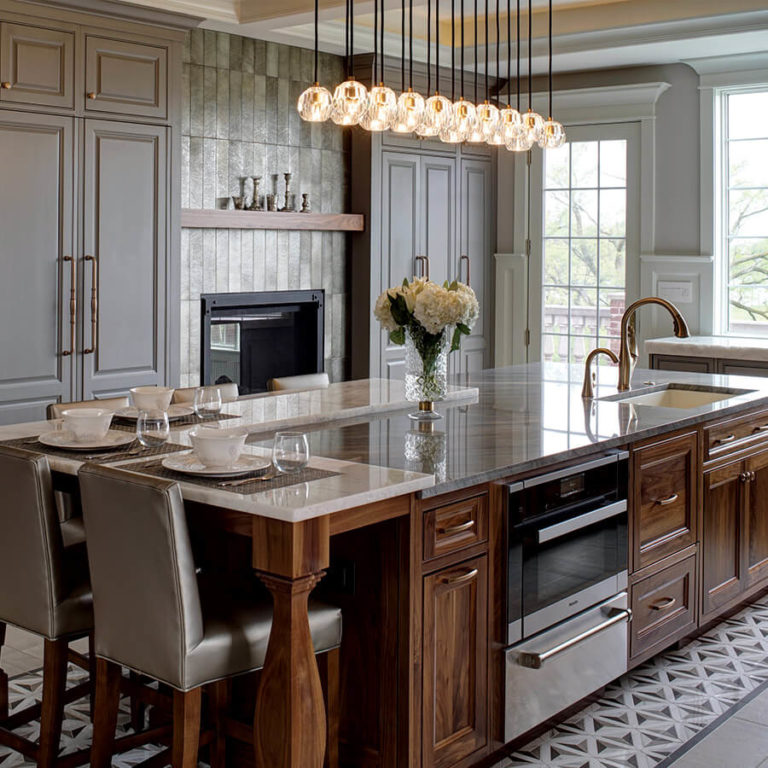
Kinds of Lighting to Use in Your Kitchen
Ambient, task, and accent lighting can all be used to provide ample illumination in your kitchen. It’s best to have a balance of all three to achieve the best design for your space.
Ambient Lighting
Ambient lighting creates an inviting kitchen atmosphere by providing top-down lighting that illuminates the general space. Ambient lighting is not task-specific and may not provide enough light in some areas.
To incorporate ambient lighting in your kitchen remodel, use a combination of light sources that serve as the base of your layered lighting plan. These days, this almost always includes can lights that spread light out over most of the space beneath them. Think about how dimmer switches can control light intensity. Think about where lighting is generally needed in an overall sense.
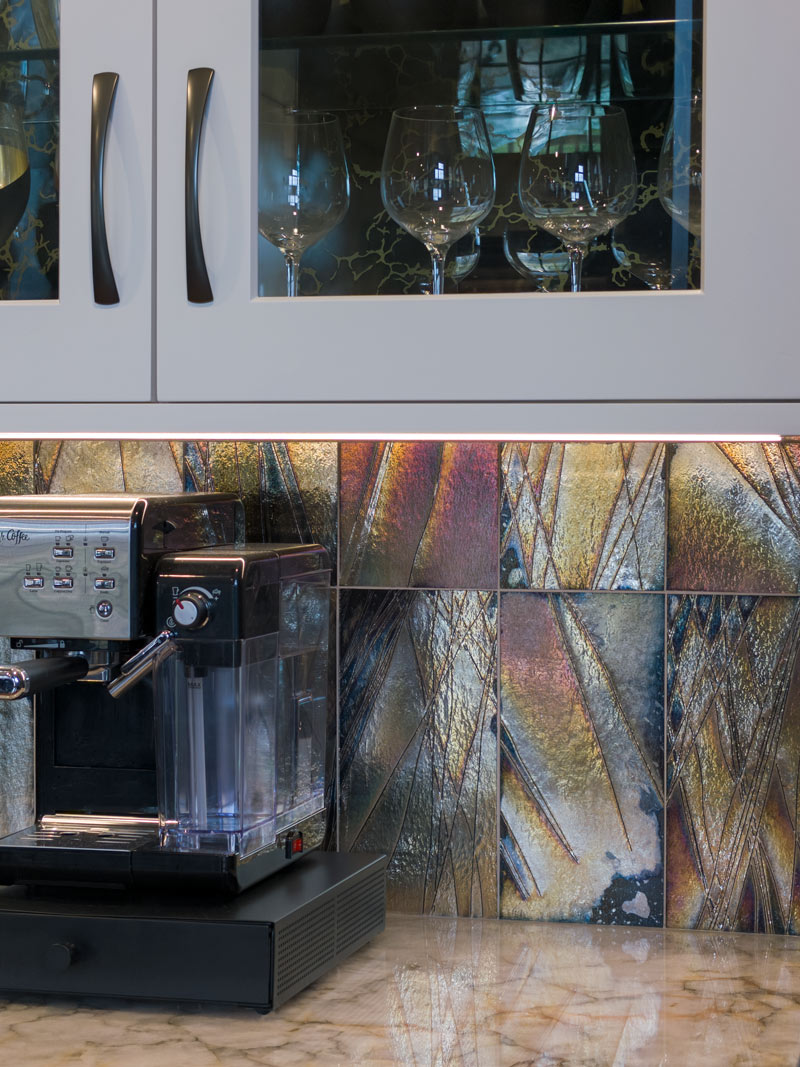
Task Lighting
Task lighting provides targeted illumination for cooking and food preparation. (And coffee preparation!)
Task lighting applies to task-area clean-up, as well. For example, consider under-cabinet lighting to illuminate countertops and work areas, pendant lights over a kitchen island or sink, and recessed can lights that can be focused on a specific area.
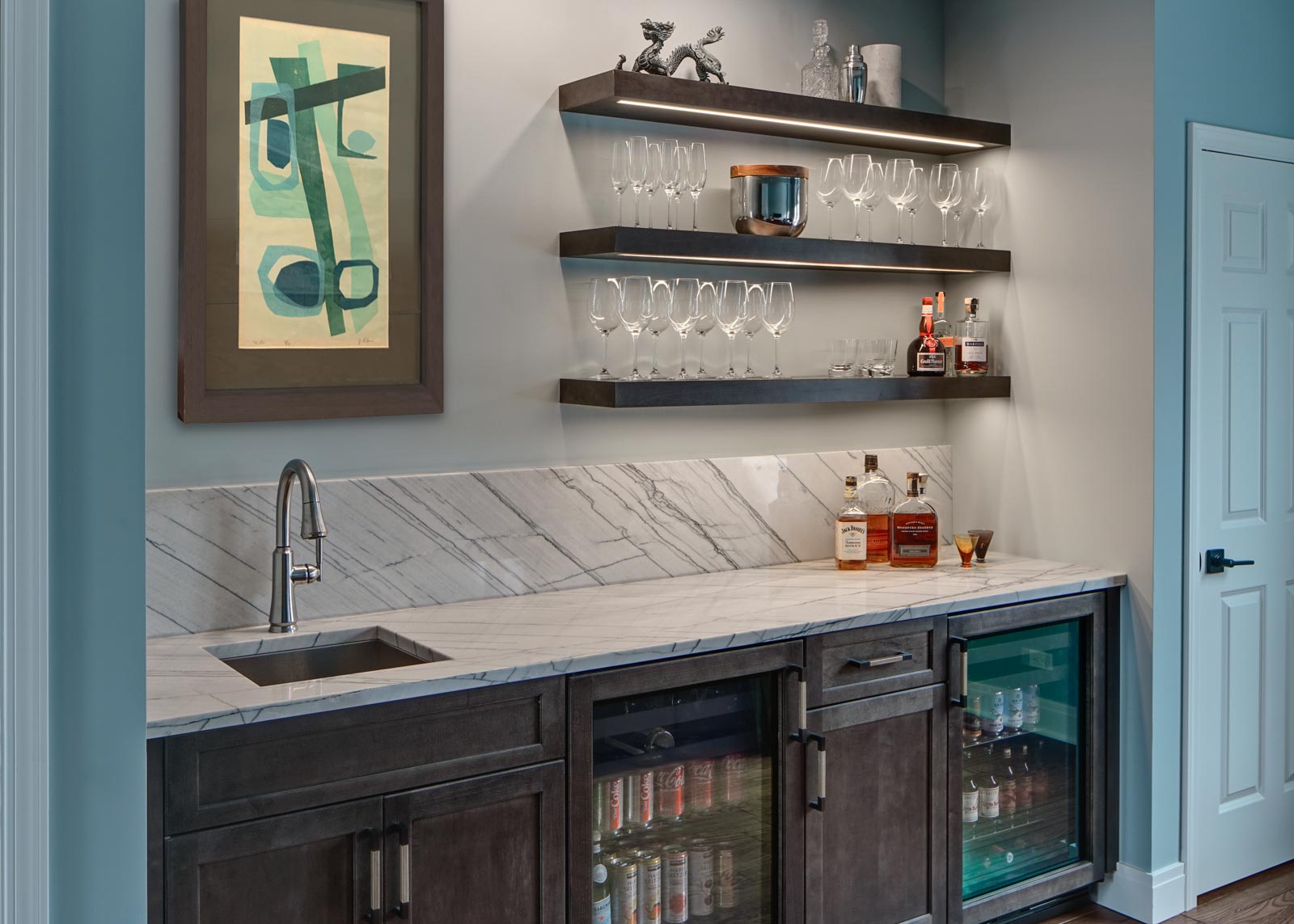
Accent Lighting
Accent lighting draws attention to key design elements or specific things worthy of focal attention. This layer of lighting adds a literal spotlight on artwork or a contrasting pop of depth and dimension to a textured design element. Back to the cans – know that there are can lights that focus on an entire wall or a specific spot beneath them (instead of just lighting up everything underneath them).
And let’s not forget that accent lighting can also include statement pieces that double as their own focal points, like this stunning light fixture…
“Never underestimate the ‘wow factor’ of lighting,” says Michelle Corrado, a lighting design consultant at Littman Brothers.
The right accent lighting will complement overhead lighting and natural light and in your design plan.
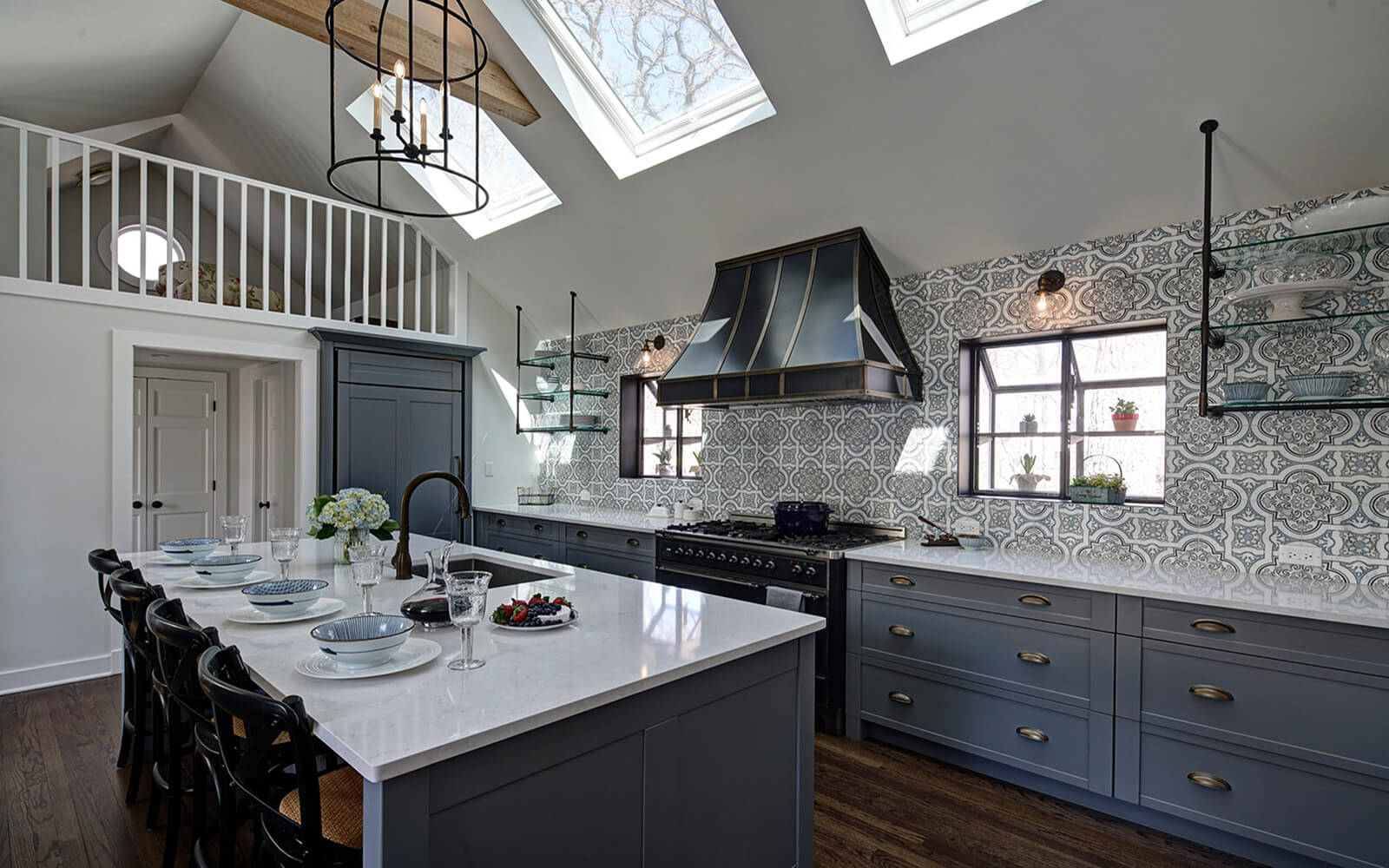
Remodeling a Kitchen for More Natural light
Natural light can transform a space, but not every kitchen has ample sunlight. With a little bit of design magic, you can maximize natural elements during your kitchen renovation.
How to Maximize Natural Light in the Kitchen
Consider using light-colored paint on walls, cabinets, and countertops. This will help reflect light and make the space feel brighter. Additionally, polished flooring can help bounce natural light around the room. You can also add mirrors or glass backsplashes.
Adding windows and skylights goes a long way, of course. You might be surprised at the possibilities, actually. A professional designer can help you figure what’s possible and this can make a big difference when your goal is to create brighter kitchen. Also, be mindful of the placement of any appliance, cabinet, or fixture that may block sunlight.
Kitchen Lighting Mistakes to Avoid
Kitchen remodeling isn’t just about good lighting. It’s about finding the right balance of lighting types, colors, and placements.
Most Common Lighting Mistakes
To create a kitchen that is both functional and visually stunning:
- Don’t view lighting as purely practical. While it’s important to have sufficient light for cooking and other tasks, don’t forget about ambiance.
- Don’t overdo it. Too many light sources can create a harsh and uninviting environment, so take a balanced approach with different types of lighting.
- Don’t use the wrong size fixtures. Fixtures that are too large or too small can throw off the balance of the room and make it feel awkward or cramped.
- Don’t neglect color temperature. Use warm or cool lights that match your design’s overall style and mood. Consider a smart lighting system that allows you to change the color temperature of different bulbs and coordinate entire scene combinations for different moods and situations.
- Don’t skip layering your light. Incorporate different types of lighting for a more dynamic and visually interesting space.
- Don’t forget about dimmers. Dimmers allow you to adjust the intensity of your lighting.
How to Eliminate Shadows
Harsh shadows can ruin the beauty of your kitchen and disrupt the visual landscape. To ensure even and flattering lighting, consider installing lights at a higher position, increasing the number of lights in your kitchen, opting for larger fixtures with diffusers, and choosing light colors/materials for your walls.
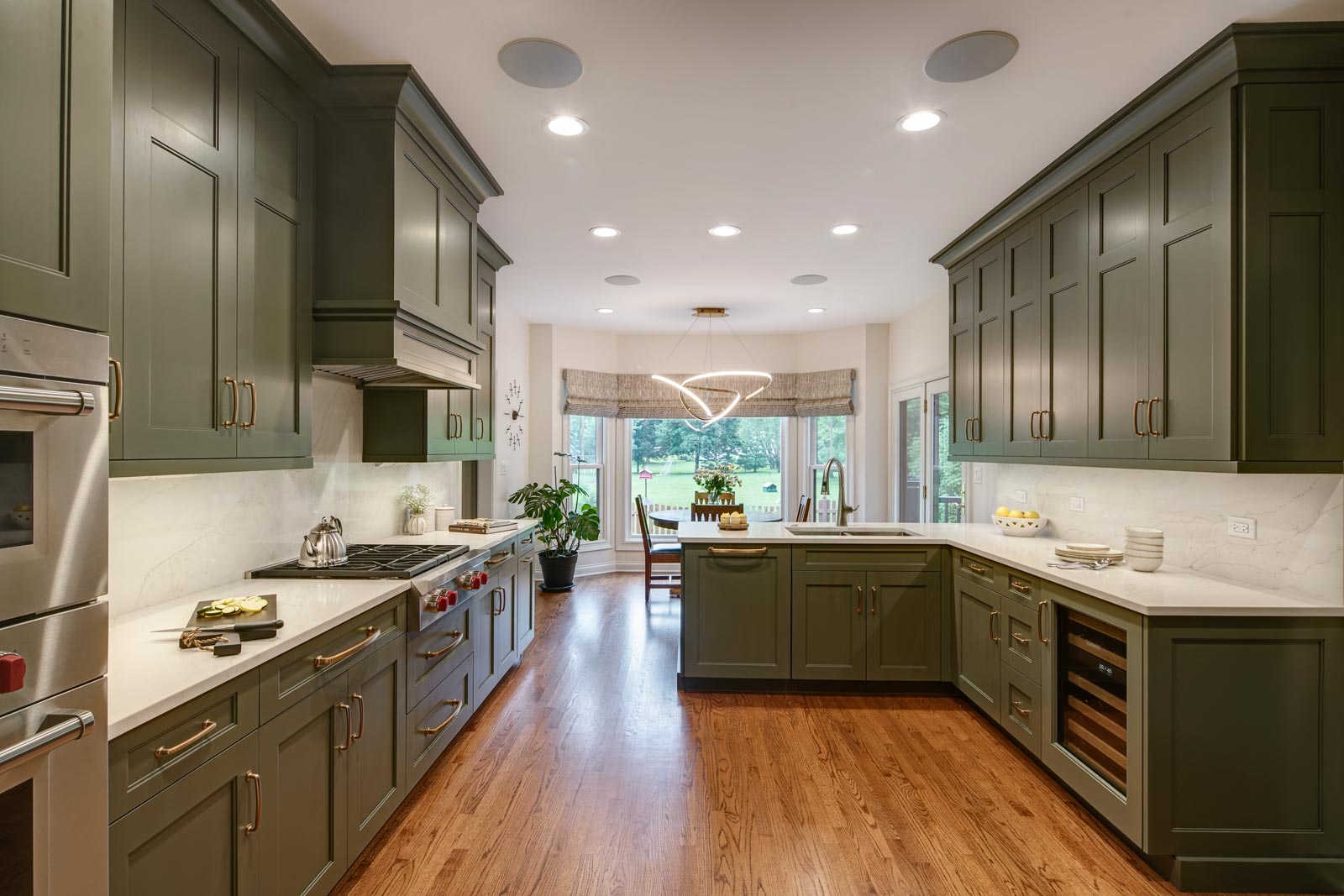
Kitchen Lighting Best Practices
When planning your kitchen remodel, these best practices can help you achieve functional, flattering, and sufficient lighting:
- Maximize any natural light sources, like windows or skylights, to brighten up the space.
- Layer a mix of ambient, task, and accent lighting to achieve a balanced look.
- For task lighting, focus on illuminating key areas where you’ll be working, like countertops or the stove area.
- For ambient lighting, position fixtures well to ensure even illumination throughout the kitchen.
- If you want to highlight unique features or create a focal point in your kitchen, invest in good accent lights.
- Consider the views from other rooms and how your kitchen lighting will impact the overall home design
Illuminate Your Kitchen Now
We hope this guide helps you see the light. You deserve a well-lit and inviting kitchen that is sure to impress. And don’t forget the other spaces in your home. This approach applies to your bathroom and many other areas of your home.
Ready to get started? Schedule a consultation now!

